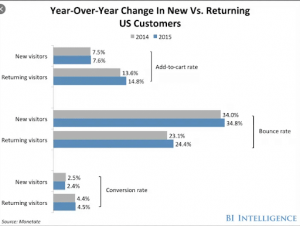Once a sales program and the relevant training are completed, the sales process can be initiated. There are three dimensions to the most prevalent sales paradigm:
(a) the offering(s)—the products and services—of a company;
(b) the prospects, or potential buyers of the offering(s); and
(c) a facilitator, a means—the salesperson—by which prospects are presented the offerings.
In order for sales to occur, a process for converting prospects into clients or customers must exist. The essential goal of a sales improvement effort is to discover and maximize the process that most efficiently and profitably converts prospective buyers into buyers. Here are eight tips that may prove helpful to you.
1. Improve your ability to intrigue your prospect
Effecive persuasion is an advanced sales skill that many senior-level salespeople lack. Why should a prospect take your call or respond to your email? Why should a prospect meet with you? Answer these and all related questions before attempting to engage in a sales pursuit. Persuasion requires being able to engage, and engagement requires being able to intrigue a prospect, which is an invaluable sales skill.
The attention of a prospect is not sufficient; you need to gain their interest, which requires your offer to be attractive. Desirability is subjective. Be careful of projecting your interests, values, beliefs, etc. onto your prospects. Your prospect may not share your point of view. (This is why I require having a recovery plan and a minimum of two leveraging points before attempting an initial call.) In order to intrigue, creativity and information attained during a profiling step (an investigative aspect of a process that is conducted during an initial meeting) may prove to be an essential component of your sales program.
2. Question the value of pop-sales tools
Popularized sales tools include constructs, such as the sales funnel, concepts such as “best practices,” and techniques, such as “closing.” These tools are generic, mass-marketed products of popularized sales ideology. The popularization of something is typically intended to capitalize on mass appeal in order to profit those promoting the popularization. Question their value to your business.
Catchy and sensationalized titles of sales books, courses, and seminars titillate audiences to buy, but usually deliver over-simplified, broad-based content that diminishes the less appealing, albeit more substantive, messages that would be more beneficial for buyers to understand, such that explain the work involved in building a reliable, profit-building sales operation. Sales services that offer a “quick and easy” solution cannot be expected to deliver the reliable and sustained sales results that you want for you business.
3. Know where you stand
How does your offer compare with that of your competition? What are your sales challenges? What are your company’s leveraging points? What is your vision for success? What are your strengths and weaknesses? How will you convert your weaknesses into strengths? What do you have to learn about your industry, market, and prospects in order to sell much more effectively?
4. Have a vision
“Vision” often denotes a “big picture” perspective, which is important; but those I manage have a vision for making each day successful, which requires knowing what to accomplish each day. Successful business owners, sales managers, and salespeople are not aimless, nor do they squander time reserved for productivity. They are dedicated to improving sales with focused attention to a course that is defined by a vision.
5. Reconsider your cold-calling practices
Few sales roles necessitate cold-calling. The telemarketer is a classic example of a sales role necessitating the cold-call. Unless your work necessitates cold-calling, do not cold-call. The practice of cold-calling annoys most people. The advent of the Internet—its resources—has enabled salespeople to replace the cold-call with the initial call (IC). The IC is an intriguing, research-based, and other-centered reason for reaching out to a prospective client. A cold-call is no longer a cold-call when a content relevant tie-in provides basis that promotes a meaningful, mutually beneficial connection. Maximize your chances of success. Conduct research, find leveraging points, and personalize your initial calls with the relevant and valuable data that creates a meaningful tie-in that interests your prospect.
6. Know why your prospect should buy from you and how you’re going to help them understand your value
Effective sales work gives prospective clients a vision, linking their interests with your offer. In order to
(434)
Report Post





